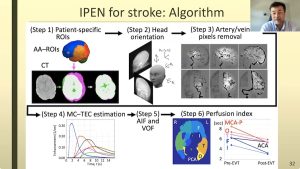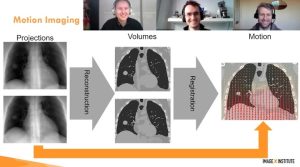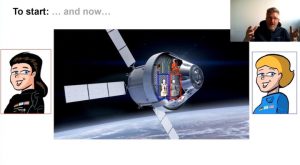FORUMS
Educating and training scientists on how the Center’s resources can aid their research

Forums are currently conducted in person and on Zoom. Please get in touch with our administrative manager to request an invite.
Request an invite
Upcoming Forums
June 20, 2025. Ultrasound Imaging as Encoded Sensing: A Unifying Computational Imaging Framework
 Nick Bottenus from the University of Colorado, Boulder, will discuss his research focused on developing system-level solutions to problems in diagnostic ultrasound imaging.
Nick Bottenus from the University of Colorado, Boulder, will discuss his research focused on developing system-level solutions to problems in diagnostic ultrasound imaging.
Past Forums
Toward Second Generation of Photon Counting CT
 (September 15, 2023) Dr. Ken Taguchi from Johns Hopkins University presents his view on the key technology for the next generation of PC-CT and the current status of research activities.
(September 15, 2023) Dr. Ken Taguchi from Johns Hopkins University presents his view on the key technology for the next generation of PC-CT and the current status of research activities.Virtual clinical trials are central to bench to bedside research: The Image X Institute Experience
 (August 18,2023) Paul Keall, Tess Reynolds, and Owen Dillon from the Image X Institute describe the central role of virtual clinical trials to their bench to bedside research, giving several examples.
(August 18,2023) Paul Keall, Tess Reynolds, and Owen Dillon from the Image X Institute describe the central role of virtual clinical trials to their bench to bedside research, giving several examples.XCAT to DukeSim: Demonstration of Virtual Imaging in CT
 (July 21, 2023) Drs. Paul Segars and Ehsan Abadi from the Center for Virtual Imaging Trials (CVIT) at Duke University demonstrate how to simulate virtual CT images for different research studies using tools developed by the CVIT.
(July 21, 2023) Drs. Paul Segars and Ehsan Abadi from the Center for Virtual Imaging Trials (CVIT) at Duke University demonstrate how to simulate virtual CT images for different research studies using tools developed by the CVIT.Human Space Exploration and the Increased Radiation Exposure – how we tackle the issue for the NASA Artemis I mission with the MARE Experiment
 (June 16, 2023) Thomas Berger from the German Aerospace Center (DLR) gives an overview of radiation levels encountered in space and the MARE experiment within the NASA Artemis I mission and highlights synergies between space radiation research and Earth based cancer therapy applications.
(June 16, 2023) Thomas Berger from the German Aerospace Center (DLR) gives an overview of radiation levels encountered in space and the MARE experiment within the NASA Artemis I mission and highlights synergies between space radiation research and Earth based cancer therapy applications.Vascular Deformation Mapping: Towards a Commercial Solution for Mapping Longitudinal Changes in Aortic Morphology
 (May 19, 2023) Chuck Hatt and Nick Burris from Imbio Inc. and Michigan Medicine discuss the development and validation of the Vascular Deformation Mapping (VDM) software used to assess thoracic aortic aneurysm (TAA).
(May 19, 2023) Chuck Hatt and Nick Burris from Imbio Inc. and Michigan Medicine discuss the development and validation of the Vascular Deformation Mapping (VDM) software used to assess thoracic aortic aneurysm (TAA).
